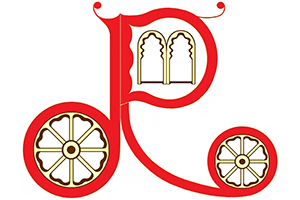IMPOSING MOUNTAINS, ANCIENT CULTURE AND COLONIAL HERITAGE; SANTIAGO & ANDES, CHILE
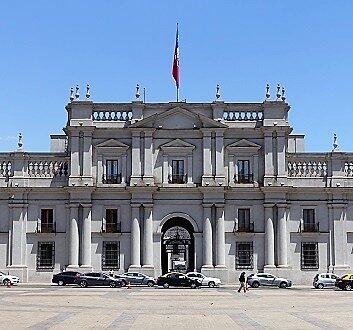
Chile, Santiago, La Moneda Palace
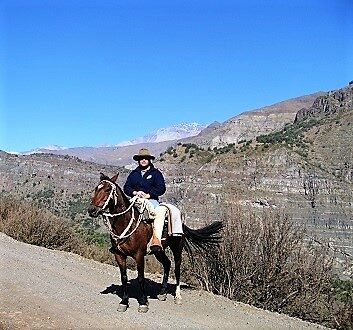
Chile, Andes Mountains, Horseback Riding
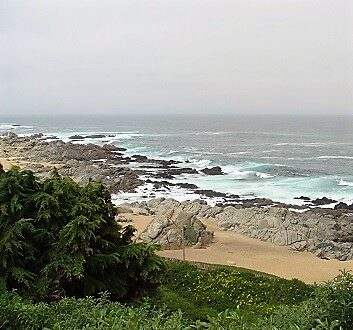
Chile, Isla Negra Museum House
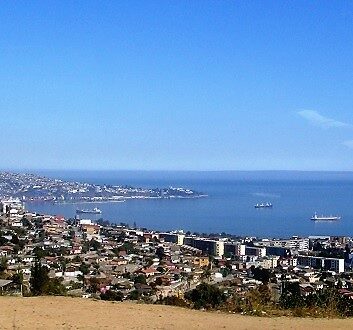
Chile, Viña del Mar
Travel Itinerary
Day 1 – Arrive Santiago, Chile
There are direct flights to/from Santiago, Chile from the USA cities, including Miami, Atlanta, Dallas and Houston. Upon arrival at the Santiago International Airport, we use private transfer services provided by our hotel. We enjoy a relaxing dinner at the nearby trendy restaurant.
Note: Our Santiago & Andes, Chile Itinerary takes place in March, the autumn season in Chile. The vast territory of Chile offers amazing attractions, including the Atacama Desert, the remote Easter Island and the Archipelago of Tierra del Fuego. Our itinerary is an introduction to Chile and explores the capital city of Santiago, the coastal towns of Viña del Mar and Valparaíso, vineyards in the Central Valley and the majestic Andes Mountains. We reserve a private car with a driver with the concierge of The Ritz-Carlton, Santiago to enjoy our curated Santiago & Andes, Chile Itinerary.
Day 2 – Santiago
We organize a private full-day tour to explore Santiago, the capital city of Chile. In the morning, we visit the Plaza de Armas and its remarkable colonial architecture. We discover the Metropolitan Cathedral and the Royal Court of Justice, presently serving as the National History Museum. The Central Post Office was previously the Governor’s Palace. A short walk from the Plaza de Armas leads to the Plaza de la Constitución and to the La Moneda Palace, the offices of Chile’s president and cabinet ministries. Afterward, we spend hours visiting different barrios and neighborhoods of Santiago. We have lunch in the Providencia barrio and are enchanted by the bohemian Bellavista barrio. After the tour, we drive back to our hotel.
Day 3 – Viña del Mar, Valparaíso, Isla Negra Museum House
In the morning, we drive two hours to the beach town of Viña del Mar. We visit the Vergara Palace situated in the Quinta Vergara Park, walk on a white sand beach and have lunch in seafood restaurant overlooking the coast. Afterward, a 20 minutes’ coastal route takes us to Valparaíso, a coastal town listed as a UNESCO World Heritage Site. We visit the historic Port of Valparaíso and the Plaza Sotomayor showcasing the neoclassical building of the Chilean Naval Headquarters and the Monument of the Heroes of Iquique. We discover hilltop neighborhoods with brightly colored houses and street art. The Ascensor El Peral (funicular style elevator) has the lower station at the Plaza de Justicia in front of the Plaza Sotomayor and the upper station at the Paseo Yugoslavo in the neighborhood of Cerro Alegre. We wander through the city and admire its remarkable colonial buildings. Located one hour and a half drive south of Valparaíso, the Isla Negra Museum House is a hillside house set along the coast, a treasured home of the famous Chilean poet, Pablo Neruda. Afterward, we drive an hour and a half back to Santiago.
Day 4 – The Andes & Valle Nevado
We schedule a private car with a driver to visit the Valle Nevado, located in the heart of the Andes. A route toward the Valle Nevado exposes valleys, rolling hills and a rugged mountain terrain. The autumn season reveals a dry landscape, sparse vegetation and breathtaking mountain peaks. We degust an excellent cuisine in the Valle Nevado Ski Resort, enjoying the spellbinding views. We visit villages and an alpaca farm, then drive back to Santiago.
Day 5 – Central Valley & Veramonte Winery
Today, we head out to the Central Valley, Chile’s fertile region with farmlands and established vineyards. Veramonte Winery (Viñedos Veramonte) is a wine producer founded in the early 1990s in the Casablanca Valley, around 1 hour drive west of Santiago. A visit to the Casablanca Valley reveals picturesque lowlands, hillsides and mountainous terrain. We learn about the wine productions process, tour organic vineyards and degust a collection of wines. We enjoy the Chilean local cuisine for lunch and tour farmlands and vineyards, discovering the great variety of high-quality Chilean wines. After the visit, we drive back to Santiago for an early dinner.
Day 6 – Hiking in the Andes
Our day hike in the Andes encompasses trekking in the mountainous terrain, watching wildlife and photographing eye-catching mountain ranges. We organize a full-day guided hiking tour to reach the Provincia Mountain at an elevation of 2,750 meters. The hike runs through unspoiled nature and guarantees incredible views of the Andes Mountains. We take a few breaks to have a picnic lunch and appreciate the nature. After the tour, we return to our hotel in Santiago and have dinner.
Day 7 – Horseback Riding in the Andes
Today, we schedule a full-day guided horseback riding tour in the Andes. We arrive at the starting point of the tour to begin the outdoor adventure. The trail overlooks rugged mountain ranges, picturesque valleys, forested landscape, edges of streams and rivers. We learn about the wild mountain plants and different species of wildlife living in the Andes. We have a picnic lunch and enjoy the panoramic view. After lunch, we continue discovering the Andes on horseback. After the tour, we return to Santiago.
Day 8 – Santiago, Chile Departure
We spend a relaxing morning in our hotel. Afterward, we transfer to the Santiago International Airport and take our flight home.
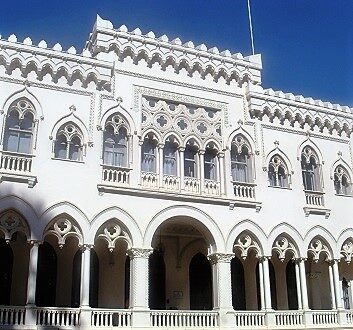
Chile, Viña del Mar, Vergara Palace
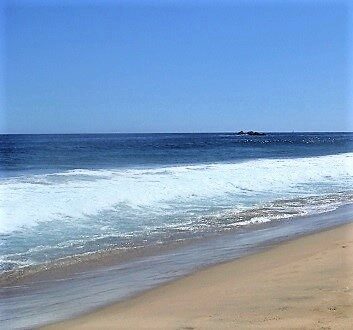
Chile, Viña del Mar, Beach
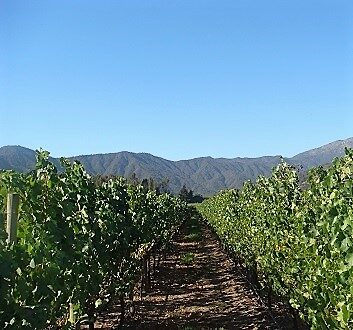
Chile, Veramonte Winery
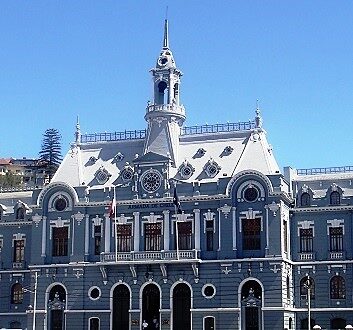
Chile, Valparaíso, Chilean Navy Headquarters
Special Places
Chile – The Republic of Chile, a country in South America, is a narrow and long strip of land between the Andes Mountains and the Pacific Ocean. Chile borders Peru to the north, Bolivia to the northeast, Argentina to the east and the Drake’s Passage to the far south. The territory of Chile encompasses Juan Fernández Islands, Desventuradas Islands, Easter Island and Isla Salas y Gómez, a group of islands scattered west of mainland Chile. The Easter Island is the most remote inhabited island on earth, a volcanic island consisting of numerous extinct volcanoes. The Rapa Nui National Park occupies large territory of Easter Island, preserving the cultural heritage of the indigenous Rapa Nui civilization. Easter Island, also known by its indigenous name Rapa Nui, is a UNESCO World Heritage Site and an open-air museum with a myriad of archeological sites, covering the period between the 10th and 16th century. The Rapa Nui society, consisting of people of Polynesian origin, created incomparable artifacts, gigantic ceremonial platforms, ancient tombs, ceremonial caves and enormous stone statues known as Moai statues. The Easter Island hosts thousands of archeological sites and megalithic Moai statues carved from lava tuff, scattered around the tranquil landscape. Easter Island is a mysterious destination with rugged beauty, steep cliffs, imposing rock art and fascinating culture. Tierra del Fuego (Land of Fire), an archipelago in the southernmost part of South America, is separated from South America mainland by the Magellan Strait. The Strait of Magellan, the Beagle Channel and the Drake Passage are the three navigable routes in South America, linking the Atlantic and Pacific Oceans. The Beagle Channel, a strait in the Tierra del Fuego Archipelago, separates the larger Tierra del Fuego Islands from the smaller islands. The Drake Passage is the stretch of open sea between the Cape Horn and the South Shetland Islands, located north of the Antarctic Peninsula. The Tierra del Fuego archipelago comprises of the Isla Grande de Tierra del Fuego, which is the main island and smaller islands. The western part of territory (two-thirds) belongs to Chile and the eastern part belongs to Argentina. Tierra del Fuego is a remote adventure destination with an extreme climate, incredible wildlife and marvelous diversity of landscapes. The Atacama Desert, stretching from southern Peru to northern Chile, is the world’s driest non-polar desert. The main attractions of the Atacama Desert are El Tatio Geysers that features many geysers, hot springs and pretty lagoons. The Salar de Atacama, the largest salt flat in Chile, incudes the beautiful Laguna Chaxa and Laguna Tebniquinche. Licancabur Volcano is a magnificent volcanic crater on the Chile-Bolivia border, east of the San Pedro de Atacama town. El Valle de la Luna (Valley of the Moon), located west of San Pedro de Atacama, is a nature reserve part of the Reserva Nacional Los Flamengos. Chile is a prosperous country, enchanting visitors with stunning landscapes, mysterious islands and captivating cultural heritage. The Mapuche are the indigenous inhabitants of south-central Chile and Argentina. The Mapuche resisted the invasions of the Inca Empire and the Spanish conquistadors, and continue protecting and preserving their culture. The ancient culture of the Mapuche consists of intriguing folklore, the Mapuche language and unique ancestral cuisine.
Santiago – Santiago is the capital city of Chile, located in a basin encircled by the Andes Mountains. It is an elegant city that showcases a European influence in its cultural monuments and colonial architecture. The Plaza de Armas was developed during the Spanish rule and became a political and cultural center. The Metropolitan Cathedral is a remarkable architectural and religious landmark. The central square houses the Royal Court of Justice that serves presently as the National History Museum. The building of the Central Post Office, previously the Governor’s Palace, symbolizes the colonial influences in Chile’s politics and culture. A short walk from the Plaza de Armas leads to the Plaza de la Constitución and to the La Moneda Palace, the offices of Chile’s president and cabinet ministries. La Moneda Palace, previously a national royal mint, was designed by the architect Joaquin Toesca in a neoclassical style. Santiago is composed of many barrios and neighborhoods, each with unique characteristics and many options for shopping, restaurants and entertainment. The Bellavista barrio is a bohemian district with trendy restaurants, galleries and a vibrant night entertainment. The Providencia barrio has a collection of luxury five-star hotels and excellent restaurants.
Viña del Mar – Viña del Mar is a popular destination for day tours, weekend excursions and for a longer vacation. It is a fashionable beach town with a long stretch of white sand beach and beautiful coastal views. A collection of restaurants serve fresh seafood and local specialties, offering panoramic coastal views. Chilean people visit Viña del Mar to swim, sunbathe and relax on the beach. The town’s Quinta Vergara Park hosts the beautiful Vergara Palace, designed in a Venetian Gothic style and surrounded by gardens, and an amphitheater that hosts an annual International Song Festival. The Vergara Palace, the former home of the Viña del Mar’s founder, is a museum housing a collection of European and Chilean art. The neatly landscaped grounds encompass sculptures and statues dedicated to artists and writers, including the writer Gabriela Mistral.
Valparaíso – The coastal city of Valparaíso, located 85 miles northwest of Santiago, is the headquarters of the Chilean Navy and Chile’s vibrant economic, historic and cultural hub. Valparaíso, listed as a UNESCO World Heritage Site, boasts a historic seaport and hilltop neighborhoods with brightly colored houses and panoramic ocean views. The Port of Valparaiso was a major trading-shipping center in South America before the construction of the Panama Canal. Chile’s National Congress Building is situated in Valparaíso. Set along Valparaíso Bay, the Plaza Sotomayor showcases the neoclassical building of the Chilean Naval Headquarters. The Chilean Navy was established after Chile declared its independence from the Spanish rule in 1818. The nearby Monument of the Heroes of Iquique is dedicated to the heroes of the naval Battle of Iquique, during the War of the Pacific against the Peru-Bolivia Confederation. Valparaíso is defined by eye-catching hillside neighborhoods, colorful street art and a fascinating bohemian life. A collection of long stairways and funicular style elevators built over 100 years ago, connect the neighborhoods, transporting the residents up and down the steep hills. The Ascensor El Peral, designated as a National Monument of Chile, has lower station at the Plaza de Justicia in front of Plaza Sotomayor and the upper station at the Paseo Yugoslavo in the neighborhood of Cerro Alegre. The Ascensor Reina Victoria, listed as a National Monument of Chile, has lower station near the Plaza Anibal Pinto and the upper station leading to the Paseo Dimalow. Wandering through the city, we admire a maze of steep hills and narrow streets lined with remarkable colonial buildings. An hour and a half drive south of Valparaíso, the Isla Negra Museum House, part of the Pablo Neruda Foundation, is a lovely hillside house offering superb views of the Pacific Ocean. The house served as a tranquil refuge for the famous Chilean poet, Pablo Neruda to write and create.
Andes Mountains & Torres del Paine – The Andes Mountains, a spectacular mountain range, extend from north to south in the western part of South America. The Andes run through Colombia, Venezuela, Ecuador, Peru, Bolivia, Chile and Argentina. The Southern Andes run through Chile and Argentina. Chile’s territory encompasses rivers, lakes and islands in the south, the coastal Atacama Desert in the north, vast areas of national parks and the majestic Andes Mountains extending from north to south. The Andes’ diverse climate changes from temperate to tropical to dry in the Atacama Desert in northern Chile. The Andes, the longest continental mountain range, has a thriving dense vegetation, dry habitat, diverse plant life and many species of wildlife. The topography of the Andes encompasses steep mountains, rugged cliffs, precipitous ridges, rolling hills and valleys. The agriculture in the Andes Mountains is challenged by the high altitude, inadequate water supply and limited fertile lands. The farmers tend to llamas and alpacas, and cultivate grains, potatoes, coffee, tobacco and coca, used to make a drink helping to relieve the symptoms of altitude sickness. The outdoor adventures in the Andes Mountains include mountain climbing, hiking tours, biking expeditions, snow adventures or horseback riding in the mountains. The Parque Nacional Torres del Paine, declared a biosphere reserve by UNESCO, is a magnificent park set between the Andes and the Patagonian Steppe in southern Chile. The immense national park boasts awe-inspiring snow-covered mountain peaks, glaciers, forests, lakes, rivers, waterfalls and expansive steppe. Nature lovers can enjoy trekking adventures, hikes to glaciers, wildlife expeditions, kayaking excursions and landscape photography.
Central Valley – The Central Valley is Chile’s fertile region with a temperate climate, prosperous farmlands and established vineyards. The Spanish conquistadors brought the first vines to Chile in the 16th century, followed by French vines being introduced in the 19th century. Over time, Chile’s grape-growers invested in modern viticultural methods and became leading global wine producers. Touring the Chilean vineyards, we discover a great variety of high-quality Chilean wines, with a few mainly found in the Chilean wine regions. Veramonte Winery (Viñedos Veramonte) is a premier wine producer in the Casablanca Valley, at around an hour drive west of Santiago. A visit to the Casablanca Valley reveals picturesque lowlands, hillsides and mountainous terrain. Visitors to the Viñedos Veramonte discover the wine productions process, tour organic vineyards and degust a variety of wines. Veramonte Winery, founded in early 1990s, produces consistent quality wines.
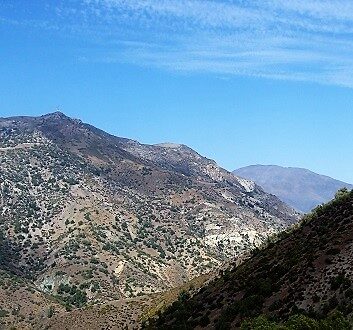
Chile, Andes Mountains
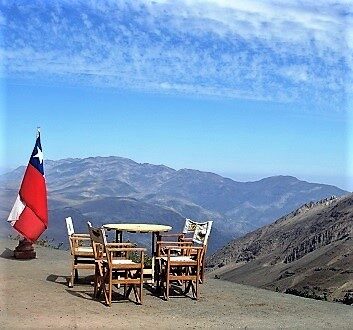
Chile, Andes Mountains
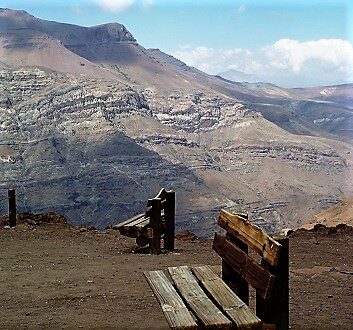
Chile, Andes Mountains
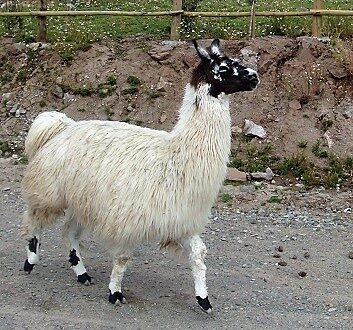
Chile, Andes Mountains, Alpaca
Favorite Adventures
Mountain Hikes – The Andes Mountains are a top adventure travel destination, offering a range of outdoor activities during all seasons. The world’s longest mountain range extends from north to south along the western part of South America. The Andes have extraordinary landscapes, thriving vegetation, multifarious plants and diverse wildlife. Adventure enthusiasts can choose mountain climbing, hiking tours, biking expeditions, snow adventures or horseback riding. We take a few day-tours to the Andes, driving to the ski resorts, photographing magnificent landscapes, hiking the scenic trails and visiting alpaca farms. Horseback riding in the Andes is a unique way to view the mountain ranges, pretty valleys, beautiful rivers and forested landscape. The San Carlos de Apoquindo Natural Park (Parque Natural San Carlos de Apoquindo), set at the Andean foothills northeast of Santiago, has pretty trails with city and nature views. The Parque Naturel Aguas de Ramón encompasses a few mountain peaks, including the highest mountain peak of Cerro San Ramón at an elevation of 3,255 meters. The Puente Nilhue Natural Park has trails leading to the Provincia Mountain at an elevation of 2,750 meters. The Cerro El Plomo has an elevation of 5,435 meters and is the largest mountain peak visible from Santiago. The ski resorts Valle Nevado, El Colorado Farellones and La Parva are great options for enthusiasts of winter sports.
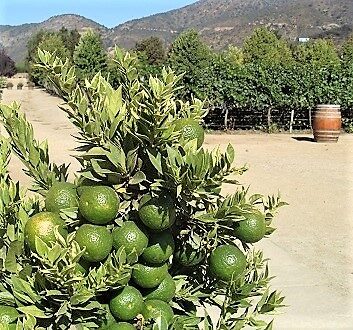
Chile, Limes
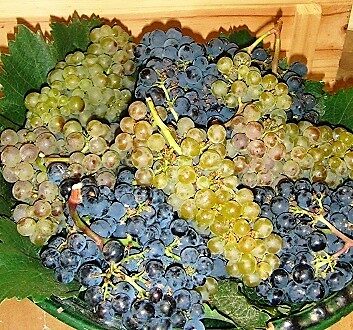
Chile, Veramonte Winery, Grapes
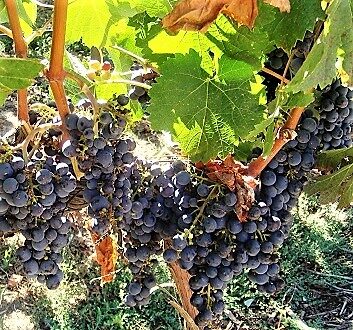
Chile, Veramonte Winery, Grapes
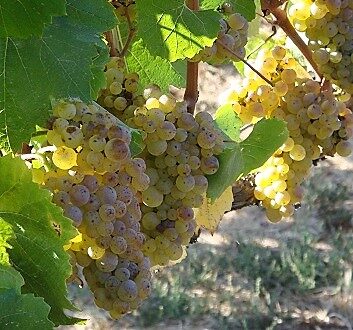
Chile, Veramonte Winery, Grapes
Selected Cuisine
Chilean Cuisine – A tapestry of fascinating cultures influenced the Chilean cuisine. The Mapuche cuisine, developed in the Araucanía Region of Chile, is based on naturally cultivated agricultural products and the aromatic Merkén, a spice made with smoked red chilies and coriander. The Spanish, French and Italian settlers introduced their own ingredients and culinary techniques. An array of diverse seafood, agricultural products, local wines and fragrant spices are used to create full-flavored dishes. Across South America, the ceviche reflects each country’s culinary identity defined by its unique ingredients and regional spices. Ceviche, a dish originated in Peru, is made with fresh raw fish and fragrant herbs, cured in lime juice. Chilean Ceviche is usually made with raw fish or seafood, vegetables, fresh lime juice or grapefruit juice, colorful peppers and cilantro. Potato, a root vegetable native to the Andes Region of South America, is a staple crop widely cultivated by the Chilean farmers. Visitors may degust a great variety of potatoes, usually baked, fried, mashed, boiled in soups or simmered in stews. Potatoes grown in Chile have different flavors, textures, and flesh and skin color. The mountainous terrain of Chile and Argentine is the native habitat for Pehuén (Monkey Puzzle Tree), a pine species. Piñones, the seeds of the Pehuén (Monkey Puzzle Tree), are a significant food source of the indigenous Mapuche people. Piñones can be eaten raw, boiled roasted or milled into flour. The town of Pica, an oasis in the Atacama Desert, is famous for the Limón de Pica. The Limón de Pica (limes of Pica) are widely used in the Chilean cuisine, for example to make ceviche or to prepare the traditional drink, called “pisco sour. The Limón de Pica is a small lime with a deep green skin color, acidic flavor and high volume of juice. Chile’s temperate climate, diverse terrain, the melting ice of the Andes Mountains and long coastline along the Pacific Ocean create the ideal environment to cultivate grape vines. The Spanish conquistadors brought the first vines to Chile in the 16th century, followed by French vines being introduced in the 19th century. Over time, Chile’s grape-growers invested in modern viticultural methods and became leading global wine producers. Touring Chilean vineyards, we discover a great variety of high-quality Chilean Wines, a few of them mainly found in the Chilean wine regions.
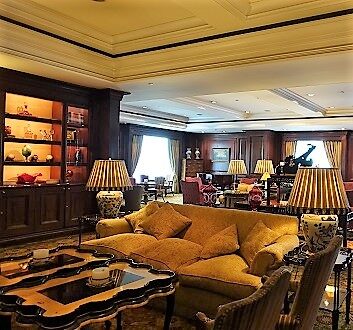
Chile, Santiago, The Ritz-Carlton, Santiago
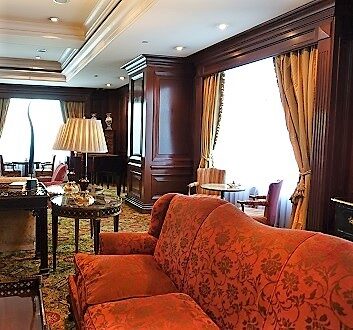
Chile, Santiago, The Ritz-Carlton, Santiago
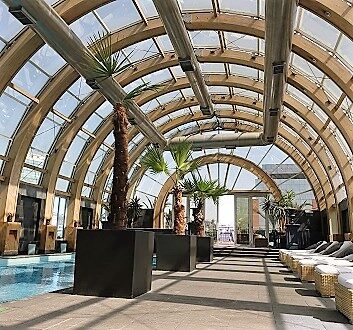
Chile, Santiago, The Ritz-Carlton, Santiago, Swimming Pool
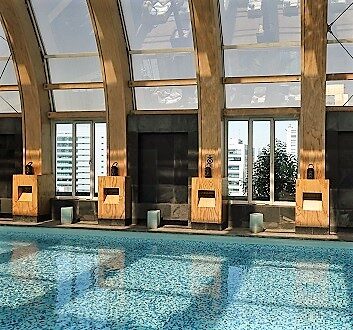
Chile, Santiago, The Ritz-Carlton, Santiago, Swimming Pool
Preferred Accommodations
The Ritz-Carlton, Santiago – Situated in the upscale Las Condes district of Santiago, the Ritz-Carlton, Santiago offers luxury and relaxation. A collection of suites and rooms with a stylish décor offer lovely city views. The glass-roofed indoor swimming pool is spacious, luminous and naturally illuminated. The Chic Estró Restaurant serves a wonderful Chilean Cuisine while the Lobby Lounge invites guests for an Afternoon Tea. The hotel boasts a premium location, within walking distance to shopping, restaurants and cafes. The Ritz-Carlton, Santiago is an excellent choice for short-term visits as well as for longer vacation stays, an ideal base to explore Chile’s towns, beaches and mountains.
